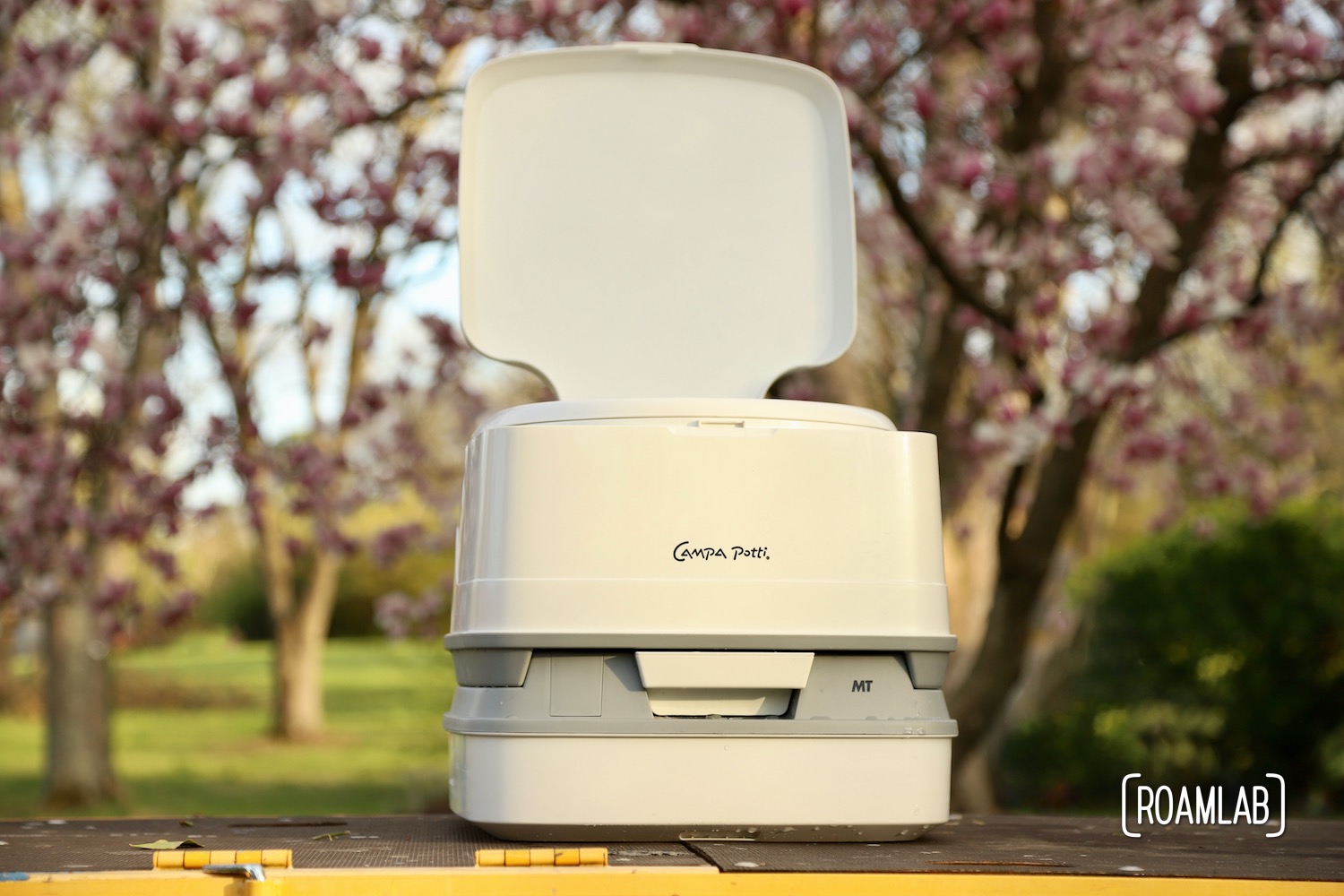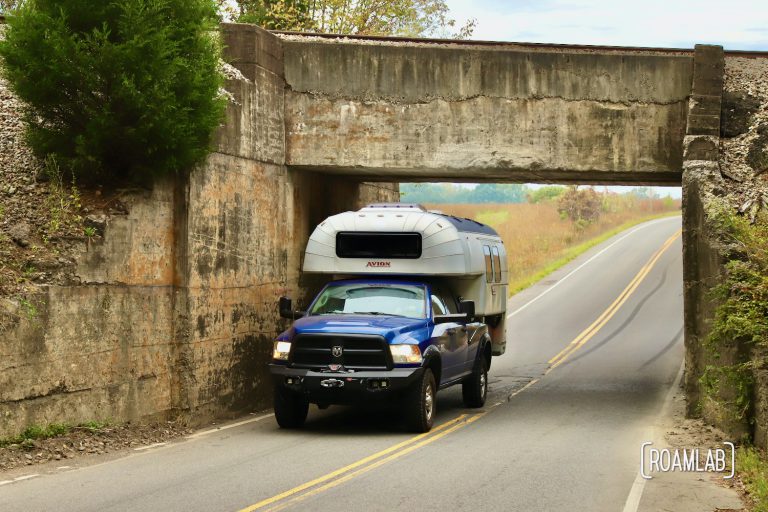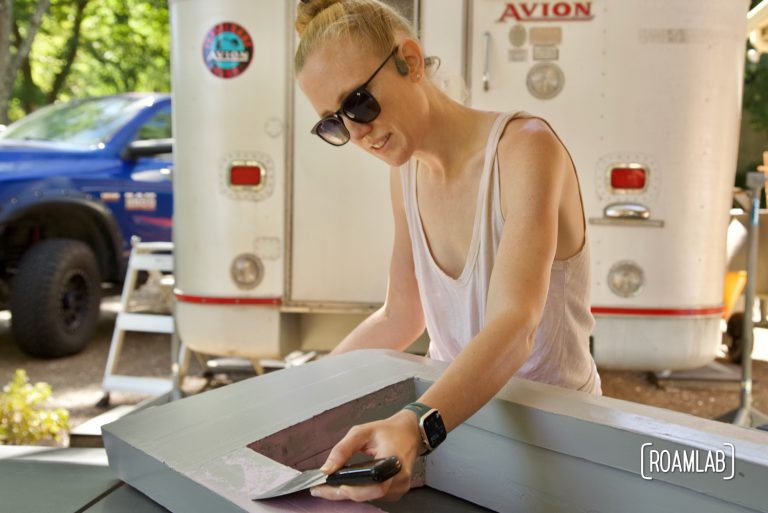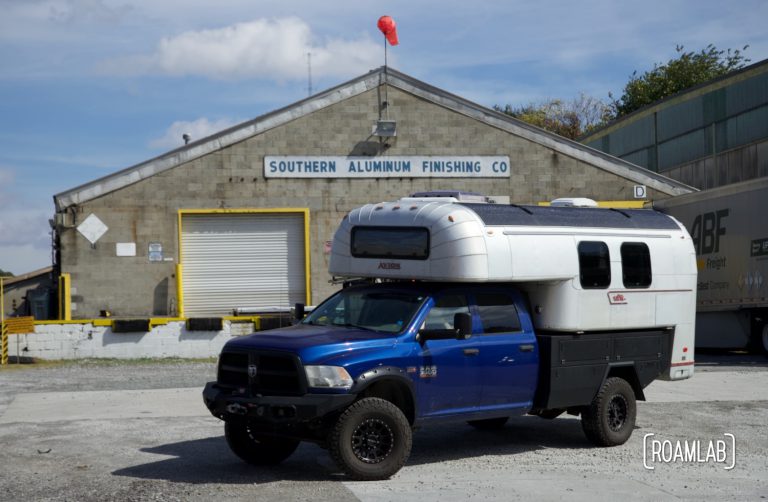Nobody wants to deal with waste disposal. It’s messy and generally unpleasant. In fact, we avoided dealing with it directly for a couple of years. We have crossed the continental US several times without a toilet on board. It’s possible, but it’s also a pain. So, when we launched the DIY renovation of a 1970 Avion C11 truck camper and couldn’t immediately settle on what fancy toilet we wanted, we grabbed a cheap and simple stand-in: the Thetford Campa Potti. And after a failed experiment with a different toilet, we even fell back on this reliable model.
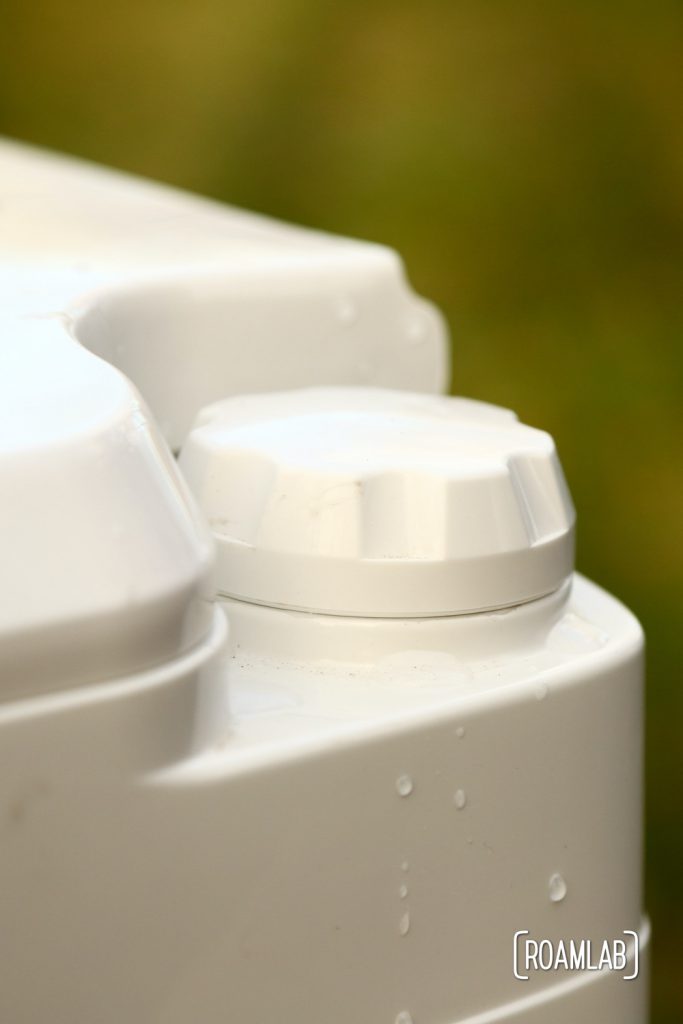
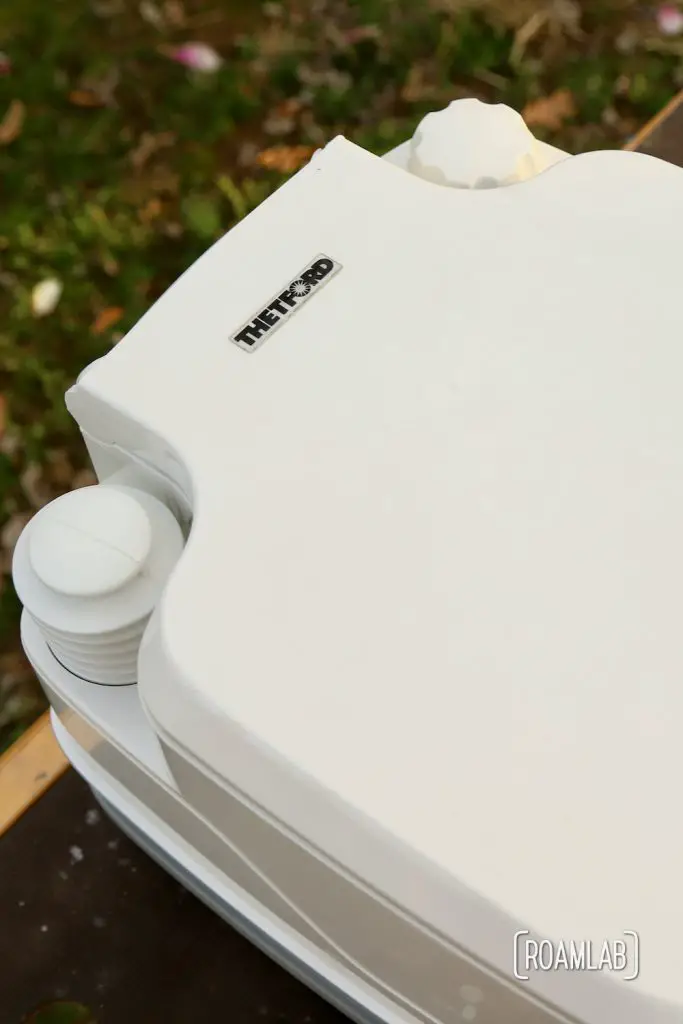
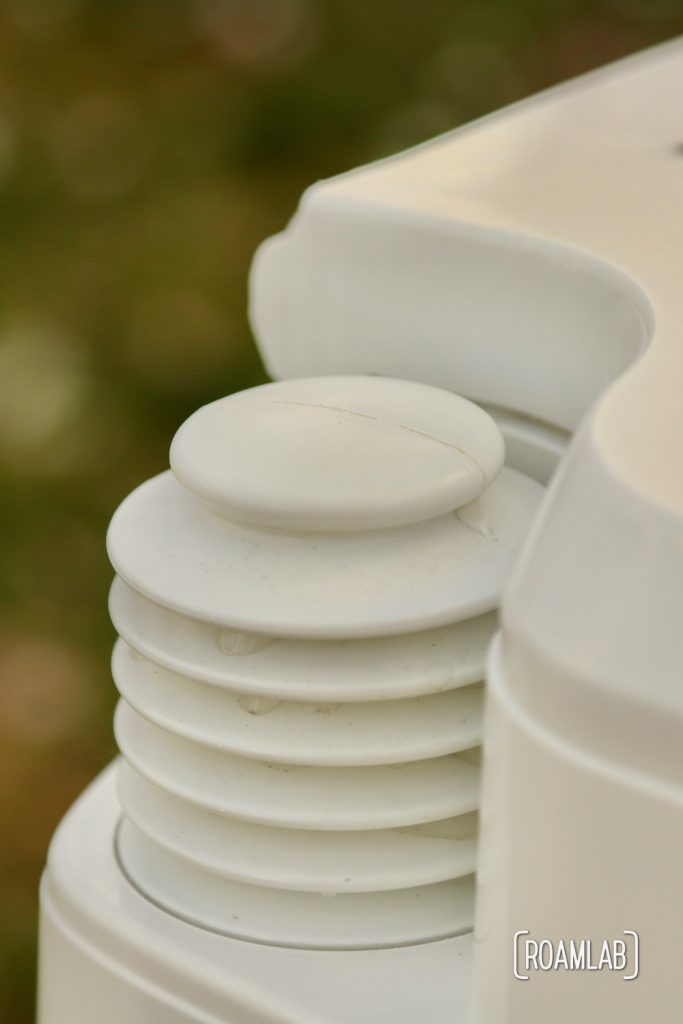
About The Thetford Campa Potti
The Thetford Campa Potti is a purely manual portable cassette-style toilet. The two-part toilet has a top section composed of a freshwater tank, seat, and basin. The lower section is a detachable waste holding tank with a hand valve that allows waste from the upper basin into the tank, a carrying handle, and a pour spout for emptying the tank into a sewer. Preparing the potti is easy: fill the freshwater tank and cover the waste tank with a thin layer of water and deodorant. Flushing it is easy: open the valve, flush some freshwater down with the hand bellows, and close the valve. Emptying it is easy: detach the black water tank and pour the waste into a sewer access point.
This model is ideal for dispersed tent camping without digging a latrine, simple DIY campers, and people like us who like to experiment with lower-cost alternatives before shelling out for an expensive model. We are all about experimentation. And, even when we thought we had found something better, we returned to the Campa Potti in the end.
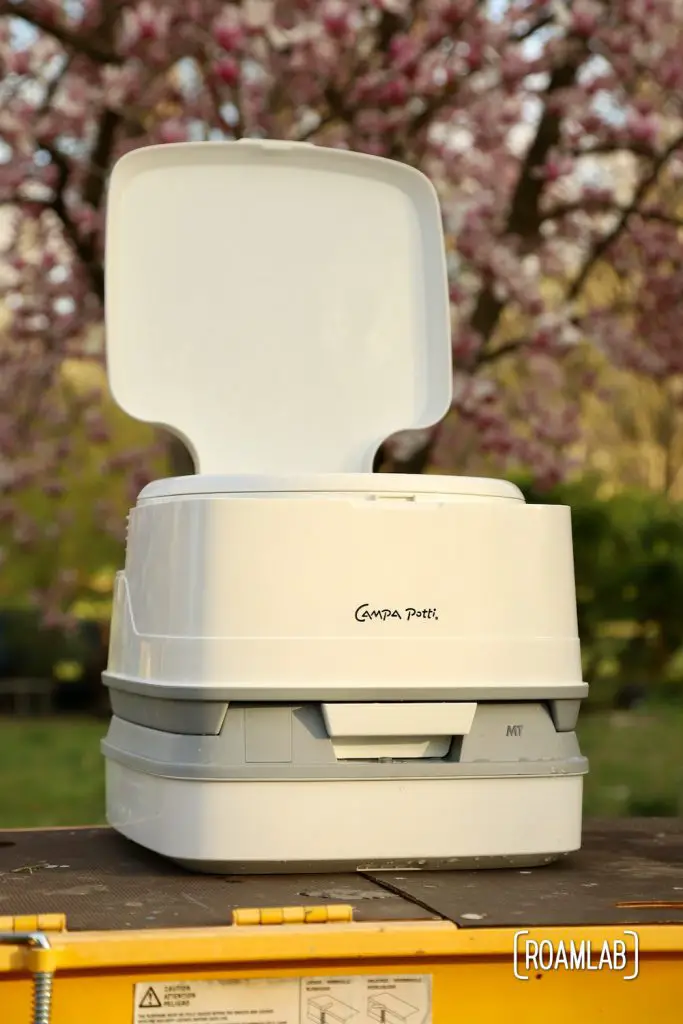
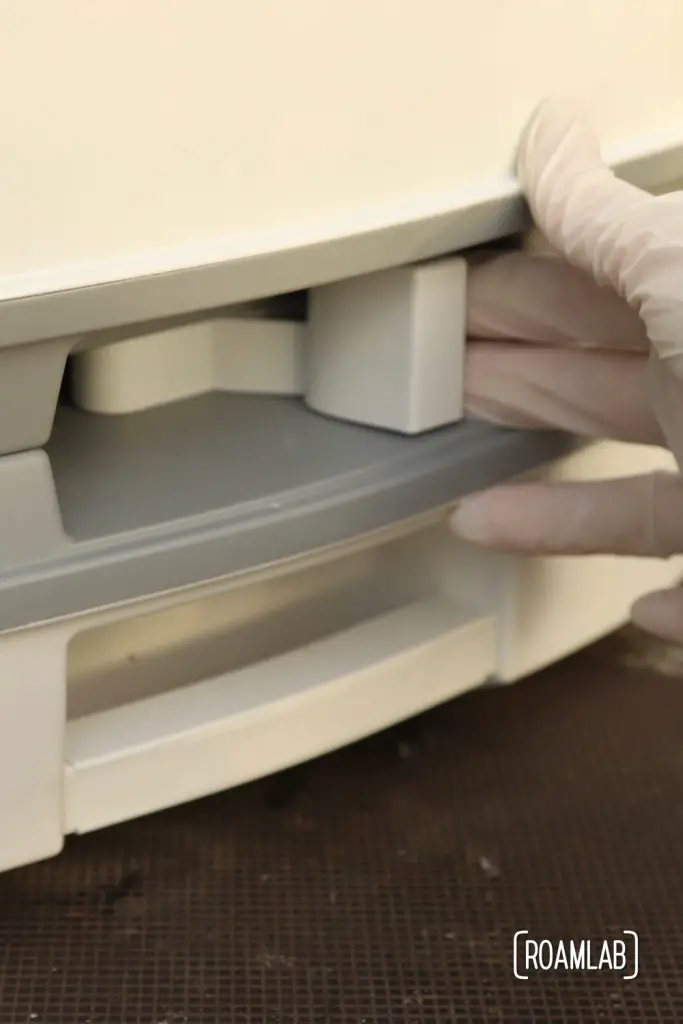
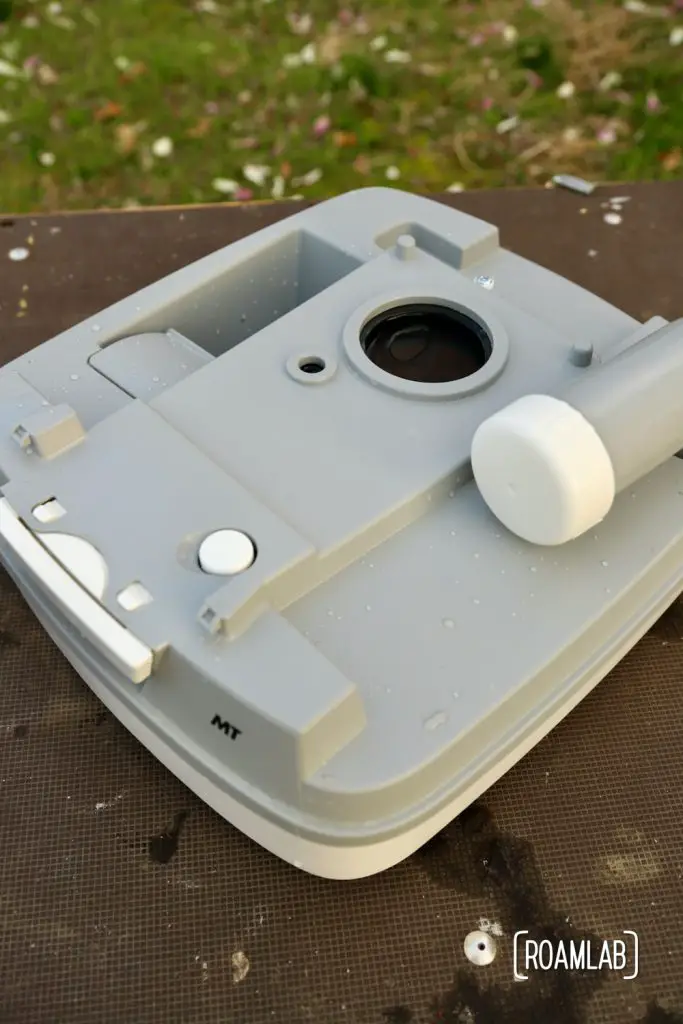
Our Toilet Tale
We actually have had two Thetford Campa Pottis. Not because one broke but because we thought we didn’t need the first until we were in a position where we did, and it wasn’t around. After a couple of years on the road without an onboard toilet, we buy our first Thetford Campa Potti as an impulse purchase. As simple and small an addition as it is, the Campa Potti is a game-changer. Suddenly, we can camp anywhere that allows overnight parking. It opens up a world of boondocking without having to worry about digging a latrine at each new location. But emptying the waste holding tank is always specter looming with each flush. The process can be smelly, messy, and unsanitary.
We are looking for a workaround when we encounter the Laveo by Dry Flush. The replaceable cartridge model means that, once flushed, we will never be directly exposed to the waste again. So we pass off the Thetford in favor of the Laveo. Problems started popping up early. After less than a year of owning the Laveo, the whole system fails with little warning. I won’t go into what a disappointment the Laveo proves to be, but suffice it to say: we were in the middle of the wilderness without a flush. We have to wait until we travel through a large metropolitan area to buy a new toilet. But we returned to the reliable Thetford Porta Potti when we do.
It’s not a perfect toilet. We continue to look for better options. But it is reliable and relatively inexpensive. And for many circumstances, it is an optimal choice.
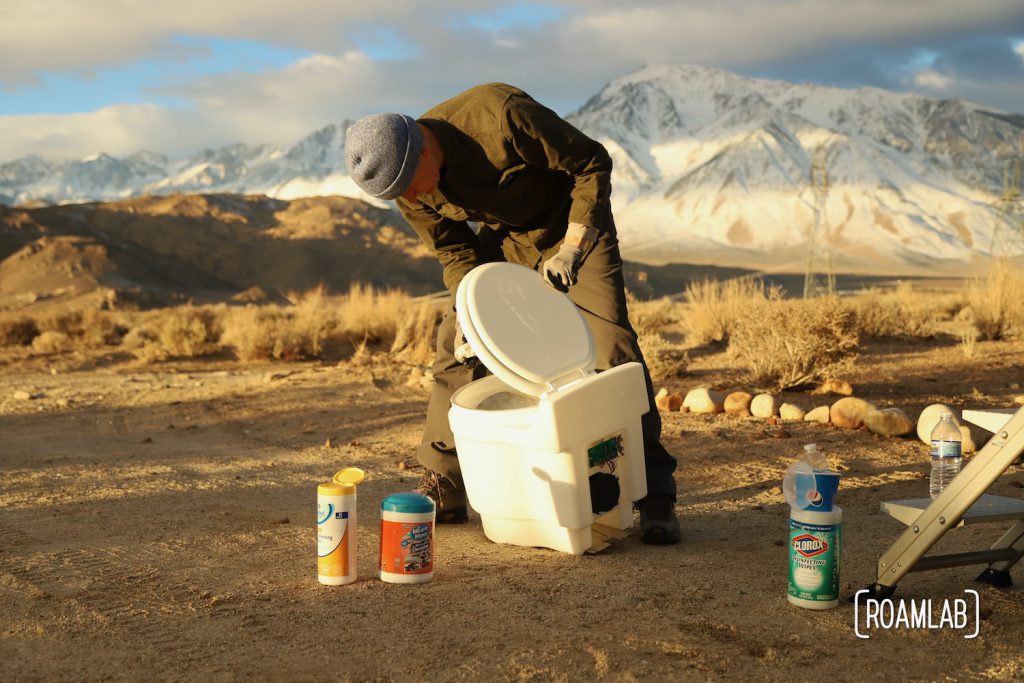
Campa Potti Upsides
Inexpensive
Price is always a relative thing. What is cheap for one person can be expensive to another. And while the Thetford Porta Potti may seem expensive compared to a 5-gallon bucket of cat litter, it is cheap compared to most retail camper toilets. Many other toilets we have encountered in our build are priced in the mid to high triple digits. The Laveo by Dry Flush, which failed us on an epic scale, costs just short of $700 at the time of writing this post. While the Thetford Porta Potti comes in many versions, most fall short of a $100 price tag. Making it eminently affordable even in cases of limited use.
No Additional Infrastructure
Many RV toilets require addition infrastructure beyond the toilet itself. Blackwater tanks, vents, and fans can streamline the camper toilet experience but mean a lot of work if the hookups were not already installed by the factory. So, for an easy, grab and go solution, the Thetford Campa Potti delightfully self-contained.
Simple Mechanisms
I have a love of simple systems. The fewer moving parts and specialized gizmos, the fewer things there are to break or steps that might be forgotten. The Thetford Campa Potti has a short learning curve since “flushing” the toilet has a few extra steps and some of the latches and coverings are not instinctively logical. But most toilets in campers require a few extra considerations. After having one overengineered toilet fail us with no warning, I take comfort in the simple and reliable design of this toilet.
Empty it (Almost) Anywhere
The detachable waste holding tank means that a user can easily empty the tank almost anywhere there is a sewer connection. Quite often, that means emptying the tank down a public toilet. Just be considerate and cleanup any splashing that may happen if pouring too quickly.
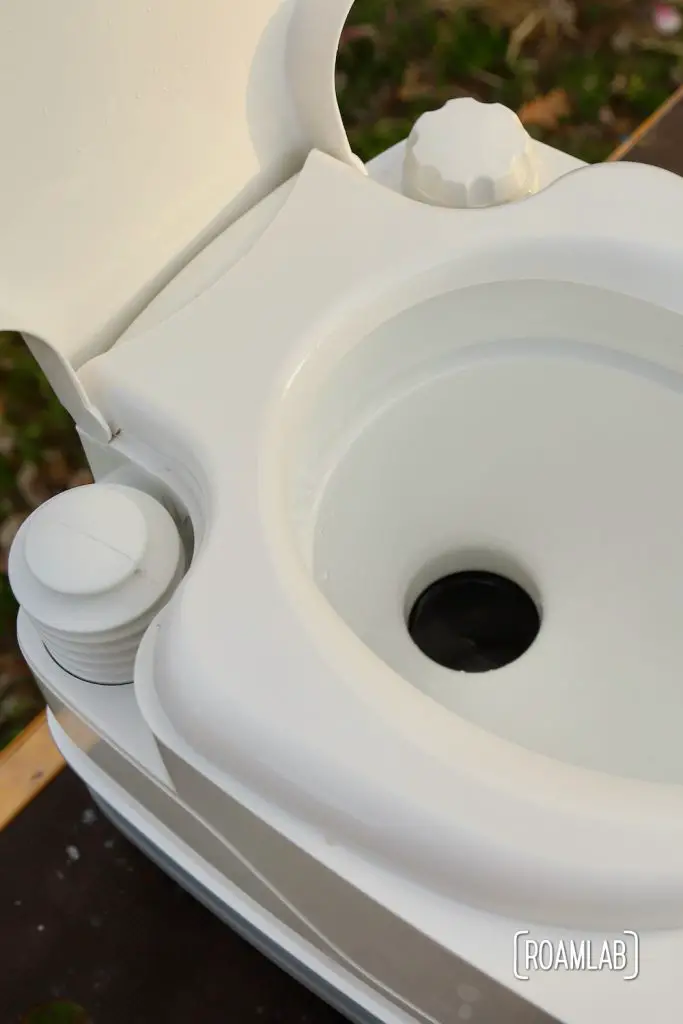
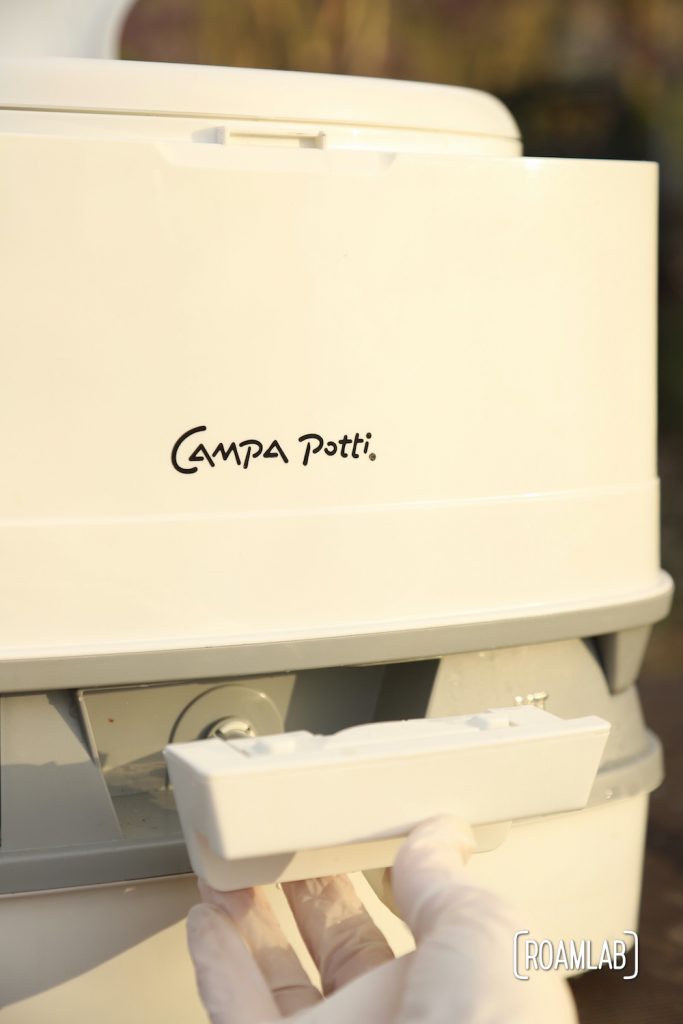
Campa Potti Downsides
Specialized Materials
Like most camper toilets with waste holding tanks, the Thetford Campa Potti requires a few specialized resources. First, the toilet paper needs to be a special TP designed to break down in the tank, making restocking a little more complicated. But lots of big box stores with a camping aisle will have RV toilet paper. On the same shelf likely is the deodorant used in most RV waste holding tanks, and the Porta Potti is no exception. These two provisions are common across most RV toilets but worth noting, nonetheless.
Raw sewage
Most toilets hold raw sewage in a reservoir, but not all do. So it’s worth pointing out the difference. Composting and incinerating toilets break down the waste to be stored in a marginally more pleasant way. This can cut back on issues of smell and potential messes when disposing of the waste. With any waste kept in the holding tank, issues of smell, mess, and sanitation remain.
Smell
The question of smell is pretty straight forward. Sewage stinks. And while the Thetford Campa Potti is meant to be used in conjunction with a waste holding tank deodorant and kept sealed when not in use, none of this is completely perfect. On a hot summer day, using the potti will come with a smell, and emptying the tank often calls for some advanced planning. (I prefer to empty the tank at night or during a cold snap when the waste doesn’t smell as ripe.)
Mess
With such a simple design, there are limited ways that Thetford’s Porta Potti can make a mess. But they do exist. If there is some leak or improperly closed valve, the resulting mess will be raw sewage with olfactory and sanitation considerations that go with it. So any cleaning calls for a deep clean. Which is one of the reasons that we keep bleach wipes around.
Sanitation
What comes out of the black water tank is unsanitary. Wear gloves and be sure to wash thoroughly after emptying the tank.
A personal anecdote: I am not a particularly clean person by any means. The dust of the road doesn’t distress me and water is too valuable for showers to be more than a treat rather than a ritual. But sanitation is key. Even so, one day after emptying the waste holding tank, my body rejected everything along my digestive tract in one morning of supplication before the ivory throne. It was swift and brutal. By the afternoon, I was back to normal. Given that Chris had no problems at all, my best conclusion was some sanitary oversight while emptying the waste holding tank. So, yeah.
Performance Under Pressure
The waste holding tank is designed to be water-tight, keeping the waste from leaking and the smell from escaping. But that also means that it lacks a vent to handle changes in pressure or volume. Generally, this is not a big deal, so long as you are conscious of any potential pressure changes. Whenever the Campa Potti changes elevation, it’s important to depressurize the waste holding tank by opening the tank’s valve. (Keep the lid closed during this process to avoid any liquid being expelled by the release of pressurized air.). If you forget to depressurize before using the toilet, however, things can get messy when pressurized air is effectively propelled into a pool of waste sitting above. Yeah, it’s pretty messy. But even that isn’t quite the worst scenario.
The worse scenario would be freezing. Since any frozen water in the black water tank will expand and potentially crack the tank. Rather than just creating a mess, this could destroy the tank. Avoiding this comes down to (a) don’t let the tank freeze or (b) empty the tank in anticipation of freezing conditions.
Small Tank
The waste holding tank on the Thetford Porta Potti only has space for 3.2 gallons of liquid. By Thetford’s estimation, that’s enough for 33 “flushes.” For a small traveling party such as Chris and I, that is an ample amount. We generally empty the toilet once a week, depending on how many public bathrooms we hit along the way. For a larger group, this could become tedious.
Little Warning
One remaining bothersome variable the lack of warning before the tank is full. If you look down the valve when flushing the toilet, you can get a sense of the depth remaining in the waste holding tank, but it’s a relative guess and not something I enjoy peering into. Still, it’s the key means of verifying when the tank needs emptying.
It pays to error on the cautious side when judging the flushes remaining. Overall, the Thetford Porta Potti tank is too small to allow to fill before emptying. If it’s starting to look full, it’s a good idea to be preemptive and empty the tank.
Emptying the Tank
No Hookups
For frequenters of full-featured RV parks, it’s worth noting that cassette-style toilets can’t hook up directly to the sewer. So, while the Thetford Porta Potti can be emptied in many locations that a standard RV black water tank cannot, the direct sewer connection at a campground is the one exception. Granted, sewer connections generally cost extra, and we do not camp in RV parks. So this really hasn’t been a downside for us, but I can see how direct hookups can be an upside for extended-stay campers.
Splashback
My favorite way to empty the waste holding tank is in a pit toilet. The waste pours straight down, and I never have to see it land. But, more often than not, we have to rely on the flushing variety of toilets. Pouring into these rounded bowels can result in some splashback if you aren’t careful. Be sure to lift the seat before pouring and clean up if there is any splashback.
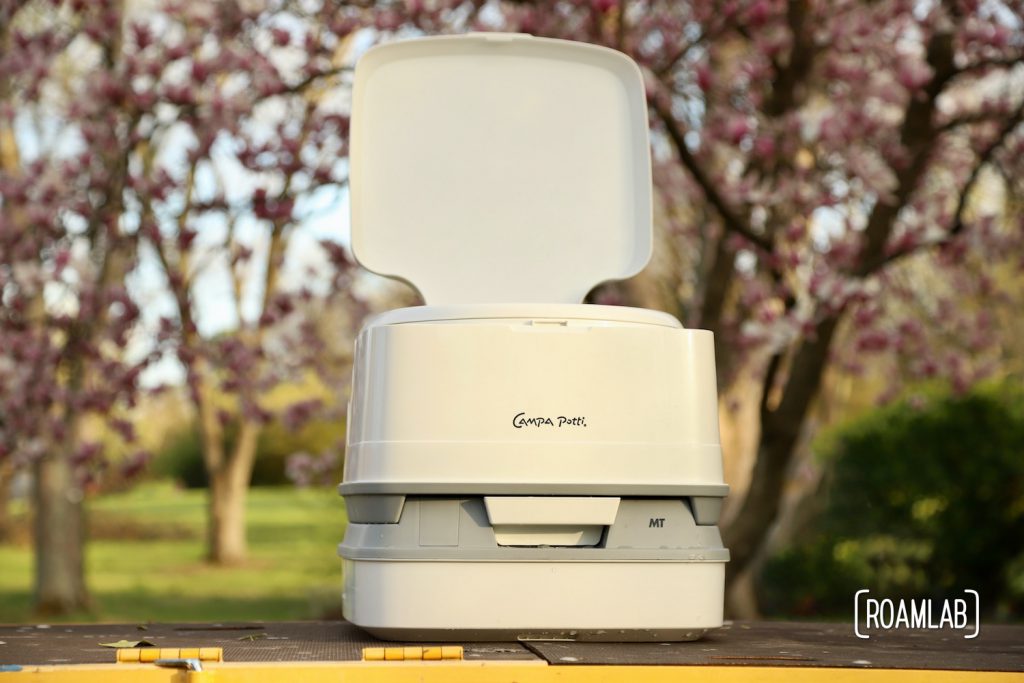
Thetford Campa Potti in a Nutshell
My long list of downsides may make the Thetford Campa Potti look undesirable, which is far from the case. Any toilet is going to come with a slew of downsides. It’s waste disposal. There rarely is an upside. But under the right conditions, this travel toilet is a logical choice. Its simple, streamlined design makes it easy to grab and go, whether you are camping in a tent or an RV. To me, it’s an ideal introductory toilet. It demonstrated the common features and pitfalls of camper toilets with a low investment. A few years with it, you’ll likely be ready to invest in a more specialized toilet, but you’ll also likely have a better sense of the difference between what you thought you needed and what you really need.


